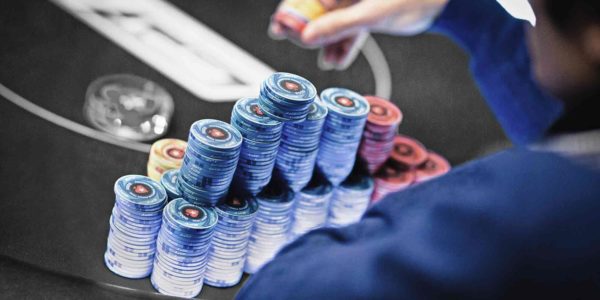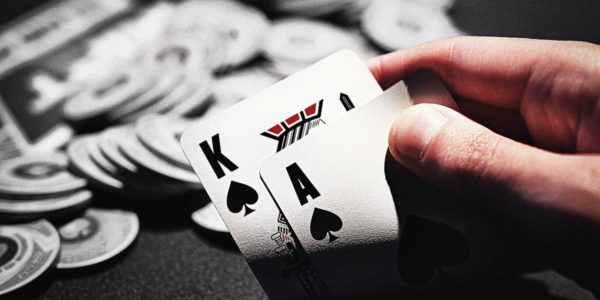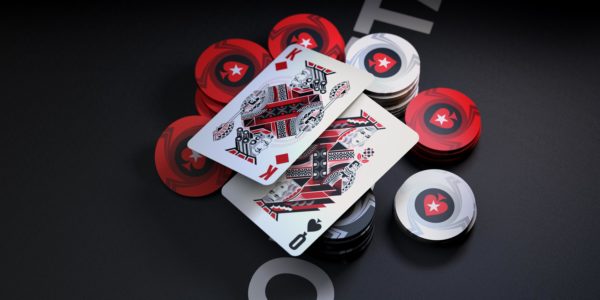Small Blind vs Big Blind Shoving Strategy
Today, our focus is on how to play the Small Blind (SB) on a three or four-handed table after it gets folded to you, when you have a stack small enough to shove all-in.
If you’ve been following this series, it will come as no surprise by now that this decision, like many others, depends massively on which player covers the other. In Grand Tour, you want to embrace a lot of high variance situations when you have a chip lead over your opponent because of the chance of winning his bounty. This only matters when there are three or four players left to act because you are racing the other opponents to pick up the bounty of a short-stacked player.
For this reason, you should shove very aggressively blind vs. blind and threaten to put all of your opponent’s chips at risk whenever possible. You have much more to gain than he does by engaging in an all-in confrontation.
Let’s try an example.
When We Cover the BB
Earlier today I was warming up for my Grand Tour stream (you can catch this on the PokerStars Twitch channel at 9am BST on Thursdays). In the first heat I played, we got down to a three handed situation where my 2161 stack covered both opponents. The blinds were 30/60. The BU folded and I looked down at J♥ 9♠ in the SB. My BB opponent was at risk of elimination if he lost an all-in. He had only 992 chips.
This stack depth is normally a bit expensive to jam at in standard tournaments, but when you have a shot at a bounty, shoving much wider than normal is warranted. I ended up limping here, but upon reviewing the spot, I saw that it was viable to play a wide shoving range here despite being a bit deeper than the standard jam vicinity. This is the range I can shove with in this spot:


It’s very hard, emotionally speaking, to feel good about some of these shoves but they are profitable. If your opponent is calling it off like a maniac, then you’ll want to avoid shoving many of these hands. If on the other hand, he is overly passive, it might be higher EV for you to limp some of the more marginal holdings and see the flop. You will also want to trap limp good hands vs. people who jam or raise too often vs. a limp.
As the effective stack gets shorter though, our SB strategy gets pretty insane against an opponent whom we cover.
How wide do you think we should shove at 8BB stack depth?
If you said any two cards, well..you weren’t far off!
Here’s the chart:


In this 8BB effective spot, you need to look past the ugliness of a hand like T4o and realise that your EV from jamming comes from fold equity and bounty winning. Even if you run into a random calling hand like A7o, your T4o is only a 36% underdog. When you factor it into the equation that your EV is higher than your opponent’s due to fold equity and the chance of a bounty, the shove makes more sense.
You can trust these charts, even if they look wrong to you. Grand Tour is not an intuitive format to grasp so have some faith at first.
When the BB Covers Us
Let’s reverse the stack sizes here and give the Big Blind our former stack; we’ll take his. So now we have 992 chips with the blinds at 30/60 and he has the big stack. How wide do we shove now?
You guessed it – much tighter! We need to be stricter about what we shove when our opponent is incentivised to call to win our bounty. We also want to linger around in case one opponent cripples the other and we get a shot at a bounty in the near future. Our shoving range as the short stack looks like this:


What a difference the bounty makes in this spot.
Now, limping could easily be the best plan here with many of these hands. Just because a hand cannot jam profitably here, does not mean that it cannot call. You will certainly want to build a limping strategy in this spot for sure because 98s and the like perform far better as a limp than a fold. The same can be said of hands at the bottom of the shoving range like K9o and T9s. When we do a push/fold calculation we are shoving hands which lose 0.4bbs on average because this is better than folding and losing 0.5bbs. Limping can easily out-perform both of these options depending on the Villain type.
Now what about the 8BB shoving range when we are covered by our opponent? Again, there is a severe tightening effect going on:


You might notice that this shoving range actually looks more like a calling range – it’s big card heavy. What’s going on?
The reason we prefer brute strength to playability in this spot is that with only 8BB stacks, the player in the BB can take a relatively cheap shot at our bounty and will want to call a lot. In other words, we have less fold equity than we would in a non-bounty game.
When fold equity is diminished, structure your shoving range to include more big cards which can be ahead when called.
Summary
- In three and four way situations, there is a great urgency to capture a short stacked opponent’s bounty before someone else does. Heads up, this urgency disappears and ranges become more normal.
- We can shove almost any hand 8BB effective when we cover our opponent SB vs BB.
- When we are covered in a SB vs BB spot, we need to be much tighter and might consider doing a lot of limping instead of risking our life for no bounty gain.
- When we are covered in a SB vs BB spots, we are getting called a lot and want to tweak our shoving range to be more big-card-heavy. We want to often be a favourite when called because fold equity is less.
Test your knowledge with our short quiz below














